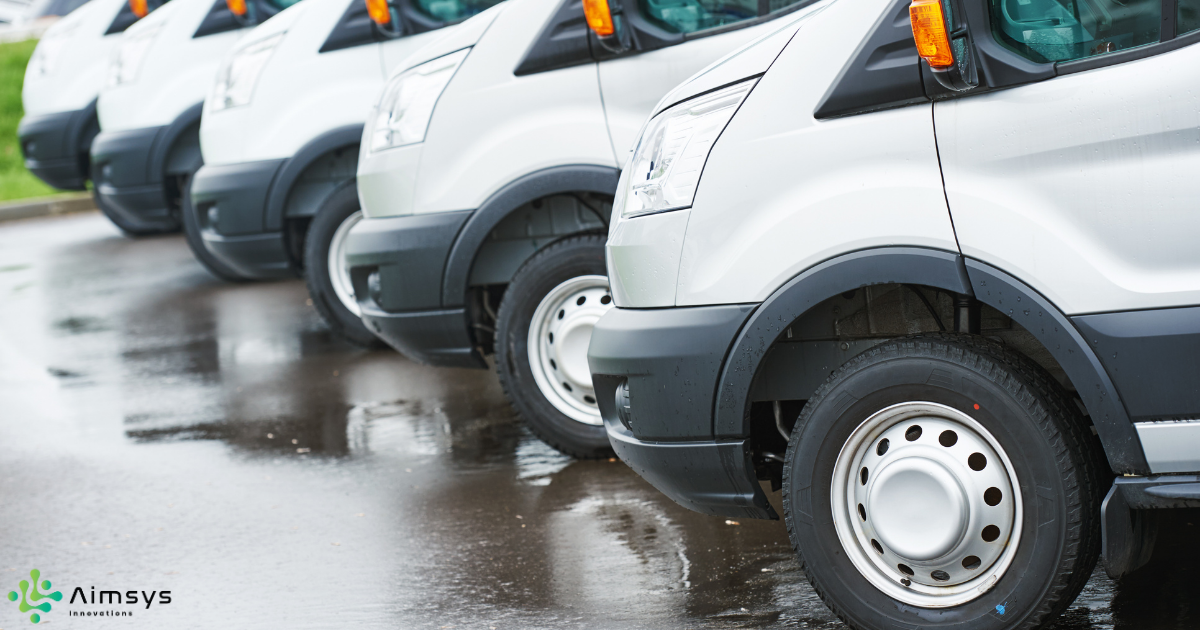Posted At: Oct 21, 2025 - 492 Views

Introduction
In the logistics industry, time, cost, and precision are everything. Delays, fuel wastage, and inefficient routes can severely impact profitability and customer satisfaction. As global supply chains become more complex, traditional route planning methods—based on fixed schedules or manual input—can no longer keep up.
That’s where Artificial Intelligence (AI) is transforming the game. By combining machine learning, predictive analytics, and real-time data processing, AI enables logistics companies to plan smarter routes, manage fleets efficiently, and adapt instantly to changing road or delivery conditions.
1. What Is AI-Powered Fleet and Route Optimization?
AI in fleet and route optimization uses intelligent algorithms to analyze massive volumes of data—including traffic patterns, weather conditions, delivery windows, and vehicle performance—to determine the most efficient routes and vehicle assignments.
Unlike static GPS-based routing, AI-driven systems continuously learn and adapt, updating routes in real-time based on new data inputs such as:
- Traffic congestion and road closures
- Fuel prices and consumption rates
- Vehicle load capacity and driver schedules
- Customer delivery preferences and time windows
2. How AI Transforms Fleet Operations
a. Dynamic Route Planning
AI algorithms, such as reinforcement learning and genetic optimization, process real-time traffic data to suggest the best possible routes. If a traffic jam or weather event occurs, the system instantly recalculates alternate paths—reducing delays and improving delivery reliability.
b. Predictive Maintenance
AI monitors vehicle performance through IoT sensors and telematics data to predict maintenance needs before breakdowns occur. This proactive approach reduces downtime and extends the lifespan of fleet assets.
c. Fuel Optimization
Fuel accounts for nearly 30–40% of logistics operating costs. AI can suggest optimal speeds, acceleration patterns, and routes that minimize fuel usage. Combined with predictive analytics, it can forecast consumption trends and reduce overall costs.
d. Driver Performance and Safety
By analyzing driver behavior—speeding, harsh braking, or idling—AI systems provide insights and feedback to improve performance. Some solutions use AI-powered video analytics to detect fatigue or distraction, enhancing safety across fleets.
e. Real-Time Tracking and Visibility
AI integrates with GPS and IoT devices to give logistics managers full visibility of every vehicle in the fleet. With AI dashboards, managers can identify delays, reroute vehicles, or communicate with customers proactively.
3. Key Benefits of AI in Fleet and Route Optimization
Area | Traditional Logistics | With AI Optimization |
Route Planning | Manual or static | Dynamic, data-driven |
Fleet Utilization | Average | 15–25% higher |
Fuel Costs | High and variable | Reduced by 10–20% |
Delivery Timeliness | Unpredictable | 95%+ on-time deliveries |
Maintenance | Reactive | Predictive |
Carbon Footprint | Higher emissions | Lower emissions, greener operations |
4. Real-World Use Cases
1. Amazon & UPS: Smart Delivery Networks
Amazon uses AI-driven predictive analytics to optimize delivery routes and forecast demand spikes. UPS’s “ORION” system (On-Road Integrated Optimization and Navigation) reportedly saves 10 million gallons of fuel annually by optimizing driver routes.
2. DHL & FedEx: Predictive Logistics
Both DHL and FedEx leverage machine learning models to predict delivery times, optimize warehouse dispatching, and minimize idle fleet hours.
3. Fleet Management Startups
Emerging SaaS platforms like Locus, Samsara, and KeepTruckin’ offer AI-driven route optimization and driver analytics for mid-size logistics firms, democratizing the technology once limited to big players.
5. Technologies Behind AI Fleet Optimization
- Machine Learning (ML): Learns from historical delivery data and continuously improves route suggestions.
- Predictive Analytics: Forecasts future delays or maintenance based on trends and anomalies.
- IoT & Telematics: Provides real-time vehicle health, fuel usage, and GPS data.
- Computer Vision: Monitors driver behavior and cargo conditions through onboard cameras.
- Big Data & Cloud Integration: Enables large-scale processing and centralized visibility.
6. Challenges and Considerations
While AI adoption in logistics offers major advantages, it also presents challenges such as:
- Data Integration: Combining data from different sources (ERP, GPS, sensors).
- Initial Investment: Hardware and software setup can be costly.
- Change Management: Drivers and managers need training to adapt to AI-driven systems.
- Cybersecurity: Connected fleets must safeguard against hacking or data breaches.
7. The Future of AI in Logistics
The future of fleet optimization lies in autonomous and self-healing logistics systems—where AI not only optimizes but also executes. Integration with autonomous vehicles, drones, and digital twins will create a fully connected logistics ecosystem.
- Autonomous Route Adjustments: AI will communicate directly with vehicles to reroute them instantly.
- Sustainability Focus: Green routing algorithms will minimize CO₂ emissions.
- End-to-End AI Supply Chains: From warehousing to last-mile delivery, AI will manage every link seamlessly.
Conclusion
AI is no longer a futuristic concept—it’s the backbone of modern logistics. By adopting AI-powered fleet and route optimization, companies can achieve higher delivery efficiency, lower costs, and a greener footprint.
The message is clear: in logistics, data is the new fuel, and AI is the new driver.
